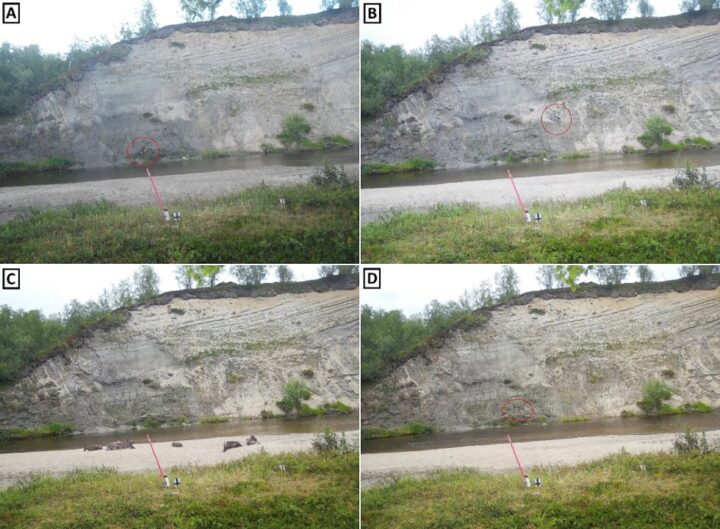What does El Niño, freeze-thaw season and reindeers have to do with Finnish riverbanks? Modeller Erik van Rooijen from Aalto University knows
Erik van Rooijen is finished collecting a whole year of riverbank erosion data from the three supersites we are working on in Freshwater Competence Centre: Pulmanki, Oulanka and Vantaanjoki rivers. This dataset including soil temperature, moisture and movement helps assessing the seasonal changes in erosion.
All of the Freshwater Competence Centre supersites are in regions where the soil freezes and thaws every year, but there are differences as well. Pulmanki riverbanks, for example, are almost free of vegetation, while Oulanka and Vantaanjoki are vegetated. Vegetation is effective in stabilizing the soil. Vantaanjoki on the other hand is so far south that the freeze-thaw processes, that seem to increase the erosion, can happen also during the winter and not only in the spring and autumn. All the results are available in Erik van Rooijen’s latest publication, and also the data is available on request, for anyone who would like to use it for their own work
https://www.sciencedirect.com/science/article/pii/S0169555X24000904

The first year of Erik’s measurements happened to be an El Niño -year. El Niño has been suggested to cause lower temperatures in the northern regions, and since the soil temperatures and soil moisture is what he is measuring, the data may later show that this year was very different from other years. This remains to be seen as the dataset gets longer. In a few years, it will be possible to also assess the interannual changes.
Erik started studying soil sensors for measuring riverbank erosion already a couple of years ago in Aalto university. His first paper on the topic was published last year and was describing the general concept and usability of sensors developed for agriculture for scientific research of riverbanks. You can read more about this method in the article below:
The data collection is easy now. The hard part of digging and burying the sensors into the steep riverbanks, hanging in a safety harnesses tied to nearby trees to avoid scientists sliding into the river, has been done. The sensors will keep sending their data into the cloud as long as the batteries of the control unit are changed annually.
Keywords: River bank erosion; Distribution; Reindeer; Freeze-thaw
The keywords of Erik’s publication are rather interesting for a hydrological modelling paper. How did the reindeer end up in this scientific publication? “We expected that most of the the erosional events would occur in the thawing period and maybe a few in the freezing period. And that’s also what we saw in all three sites, but especially in the Pulmanki site we also noticed there was an additional moment of erosional action, which occurred in, I believe it was July.” Erik explains. This extra erosion in July made him go through the photos in the area, that are automatically taken every two hours of the studied river banks. The culprit was found in these photos: the reindeer were trampling around and on the steep riverbank, causing disturbance in the data with their hoofs. In fact, they can cause a snowball effect. “the little bit of pressure in one location can start a slightly larger piece of soil to slide down, which is what we would measure.” Erik explains.
Next steps for Erik and the whole research group are to build and validate the model that predicts the environmental effects on riverbanks. That essentially requires long hours writing mathematical code in python, and the real-life collected dataset, that can be used to validate the model. Eventually certain environmental parameters can be changed in the model to test what effects the changes could have on the riverbanks. “You can never measure the future, but you can try to make predictive models of it”, Erik says.
The research in Green-Digi-Basin and Hydro RI Platform continues until the end of this year and is funded by European Union-NextGenerationEU. Right now there are several possibilities to join Aalto University and our other partner universities through DIWA PhD pilot – See all open positions and apply by 20th April through: https://digitalwaters.fi/phd-pilot/apply/


